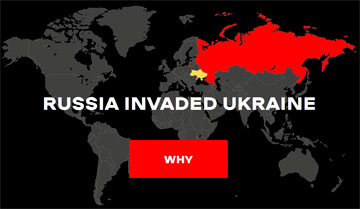Multiple vulnerabilities in Oracle Communications Diameter Signaling Router
| Risk | Critical |
| Patch available | YES |
| Number of vulnerabilities | 6 |
| CVE-ID | CVE-2024-0450 CVE-2023-46218 CVE-2024-33602 CVE-2024-34750 CVE-2024-37371 CVE-2023-46604 |
| CWE-ID | CWE-400 CWE-200 CWE-119 CWE-399 CWE-125 CWE-502 |
| Exploitation vector | Network |
| Public exploit | Vulnerability #6 is being exploited in the wild. |
| Vulnerable software |
Oracle Communications Diameter Signaling Router Server applications / Other server solutions |
| Vendor | Oracle |
Security Bulletin
This security bulletin contains information about 6 vulnerabilities.
1) Resource exhaustion
EUVDB-ID: #VU87685
Risk: Medium
CVSSv4.0: 6.6 [CVSS:4.0/AV:N/AC:L/AT:N/PR:N/UI:N/VC:N/VI:N/VA:H/SC:N/SI:N/SA:N/E:U/U:Green]
CVE-ID: CVE-2024-0450
CWE-ID:
CWE-400 - Resource exhaustion
Exploit availability: No
DescriptionThe vulnerability allows a remote attacker to perform a denial of service (DoS) attack.
The vulnerability exists due to the zipfile module does not properly control consumption of internal resources when extracting files from a zip archive. A remote attacker can pass a specially crafted archive aka zip-bomb to the application, trigger resource exhaustion and perform a denial of service (DoS) attack.
MitigationInstall update from vendor's website.
Vulnerable software versionsOracle Communications Diameter Signaling Router: 9.0.0.0.0
CPE2.3 External linkshttps://www.oracle.com/security-alerts/cpujan2025.html?947627
Q & A
Can this vulnerability be exploited remotely?
Yes. This vulnerability can be exploited by a remote non-authenticated attacker via the Internet.
Is there known malware, which exploits this vulnerability?
No. We are not aware of malware exploiting this vulnerability.
2) Information disclosure
EUVDB-ID: #VU83900
Risk: Low
CVSSv4.0: 1 [CVSS:4.0/AV:L/AC:L/AT:N/PR:N/UI:A/VC:L/VI:N/VA:N/SC:N/SI:N/SA:N/E:U/U:Clear]
CVE-ID: CVE-2023-46218
CWE-ID:
CWE-200 - Exposure of sensitive information to an unauthorized actor
Exploit availability: No
DescriptionThe vulnerability allows a remote attacker to gain access to potentially sensitive information.
The vulnerability exists due to an error in curl that allows a malicious HTTP server to set "super cookies" that are then passed back to more origins than what is otherwise allowed or possible. A remote attacker can force curl to send such cookie to different and unrelated sites and domains.
MitigationInstall update from vendor's website.
Vulnerable software versionsOracle Communications Diameter Signaling Router: 9.0
CPE2.3 External linkshttps://www.oracle.com/security-alerts/cpujan2025.html?947627
Q & A
Can this vulnerability be exploited remotely?
Yes. This vulnerability can be exploited by a remote non-authenticated attacker via the Internet.
Is there known malware, which exploits this vulnerability?
No. We are not aware of malware exploiting this vulnerability.
3) Buffer overflow
EUVDB-ID: #VU89709
Risk: Medium
CVSSv4.0: 6.6 [CVSS:4.0/AV:N/AC:L/AT:N/PR:N/UI:N/VC:N/VI:N/VA:H/SC:N/SI:N/SA:N/E:U/U:Green]
CVE-ID: CVE-2024-33602
CWE-ID:
CWE-119 - Memory corruption
Exploit availability: No
DescriptionThe vulnerability allows a remote attacker to perform a denial of service (DoS) attack.
The vulnerability exists due to netgroup cache assumes NSS callback is using in-buffer strings in nscd binary. A remote attacker can trigger memory corruption and perform a denial of service (DoS) attack.
Install update from vendor's website.
Vulnerable software versionsOracle Communications Diameter Signaling Router: 9.0.0.0.0-9.0.2.0.0
CPE2.3 External linkshttps://www.oracle.com/security-alerts/cpujan2025.html?947627
Q & A
Can this vulnerability be exploited remotely?
Yes. This vulnerability can be exploited by a remote non-authenticated attacker via the Internet.
Is there known malware, which exploits this vulnerability?
No. We are not aware of malware exploiting this vulnerability.
4) Resource management error
EUVDB-ID: #VU93732
Risk: Medium
CVSSv4.0: 6.6 [CVSS:4.0/AV:N/AC:L/AT:N/PR:N/UI:N/VC:N/VI:N/VA:H/SC:N/SI:N/SA:N/E:U/U:Green]
CVE-ID: CVE-2024-34750
CWE-ID:
CWE-399 - Resource Management Errors
Exploit availability: No
DescriptionThe vulnerability allows a remote attacker to perform a denial of service (DoS) attack.
The vulnerability exists due to improper management of internal resources within the application when handling HTTP/2 stream. A remote attacker can initiate multiple HTTP/2 connections to the server that are remain open and perform a denial of service (DoS) attack.
MitigationInstall update from vendor's website.
Vulnerable software versionsOracle Communications Diameter Signaling Router: 8.6.0.4.0
CPE2.3 External linkshttps://www.oracle.com/security-alerts/cpujan2025.html?947627
Q & A
Can this vulnerability be exploited remotely?
Yes. This vulnerability can be exploited by a remote non-authenticated attacker via the Internet.
Is there known malware, which exploits this vulnerability?
No. We are not aware of malware exploiting this vulnerability.
5) Out-of-bounds read
EUVDB-ID: #VU93519
Risk: Medium
CVSSv4.0: 2.7 [CVSS:4.0/AV:N/AC:L/AT:N/PR:N/UI:N/VC:L/VI:N/VA:N/SC:N/SI:N/SA:N/E:U/U:Green]
CVE-ID: CVE-2024-37371
CWE-ID:
CWE-125 - Out-of-bounds read
Exploit availability: No
DescriptionThe vulnerability allows a remote attacker to gain access to potentially sensitive information.
The vulnerability exists due to a boundary condition when handling GSS message token. A remote attacker can send specially crafted token to the application, trigger an out-of-bounds read error and read contents of memory on the system.
MitigationInstall update from vendor's website.
Vulnerable software versionsOracle Communications Diameter Signaling Router: 9.0.0.0.0-9.0.2.0.0
CPE2.3 External linkshttps://www.oracle.com/security-alerts/cpujan2025.html?947627
Q & A
Can this vulnerability be exploited remotely?
Yes. This vulnerability can be exploited by a remote non-authenticated attacker via the Internet.
Is there known malware, which exploits this vulnerability?
No. We are not aware of malware exploiting this vulnerability.
6) Deserialization of Untrusted Data
EUVDB-ID: #VU82690
Risk: Critical
CVSSv4.0: 9.3 [CVSS:4.0/AV:N/AC:L/AT:N/PR:N/UI:N/VC:H/VI:H/VA:H/SC:N/SI:N/SA:N/E:A/U:Red]
CVE-ID: CVE-2023-46604
CWE-ID:
CWE-502 - Deserialization of Untrusted Data
Exploit availability: Yes
DescriptionThe vulnerability allows a remote attacker to execute arbitrary code on the target system.
The vulnerability exists due to insecure input validation when processing serialized data in the OpenWire protocol. A remote attacker can pass specially crafted data to the application and execute arbitrary code on the target system.
Successful exploitation of this vulnerability may result in complete compromise of vulnerable system.
MitigationInstall update from vendor's website.
Vulnerable software versionsOracle Communications Diameter Signaling Router: 8.2.3.0.0
CPE2.3 External linkshttps://www.oracle.com/security-alerts/cpujan2025.html?947627
Q & A
Can this vulnerability be exploited remotely?
Yes. This vulnerability can be exploited by a remote non-authenticated attacker via the Internet.
Is there known malware, which exploits this vulnerability?
Yes. This vulnerability is being exploited in the wild.
